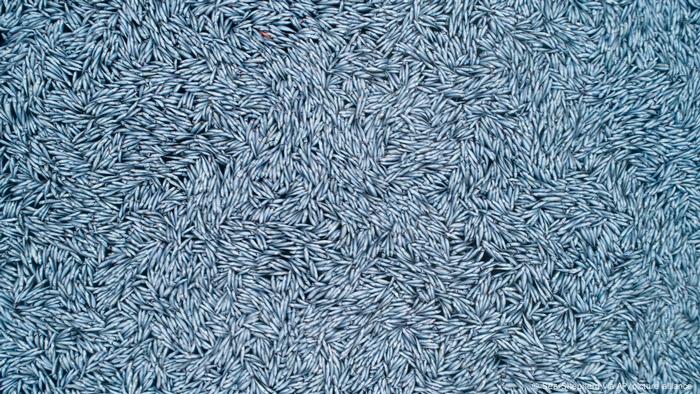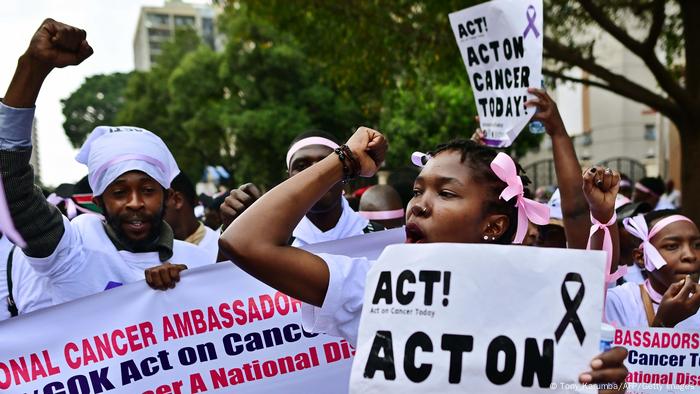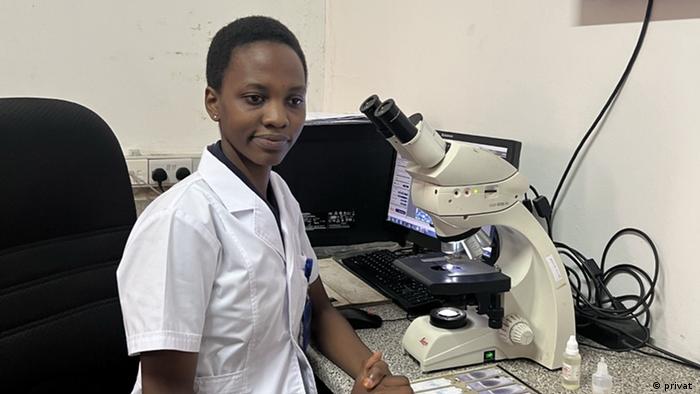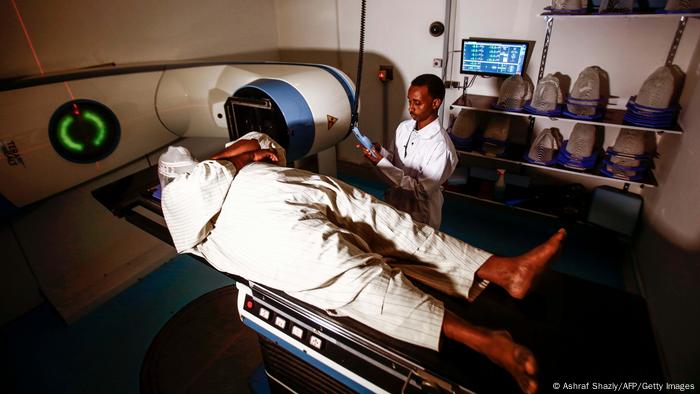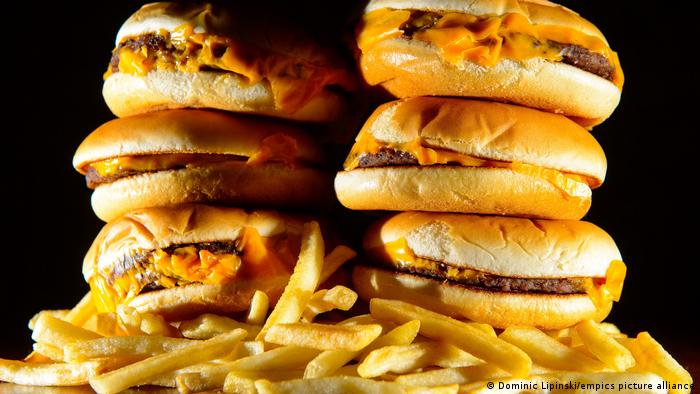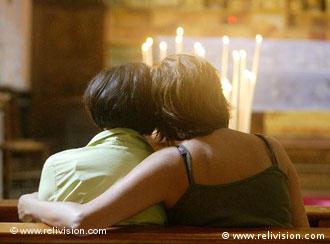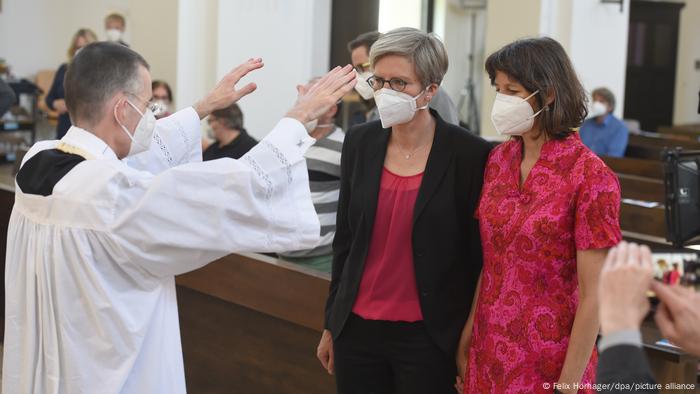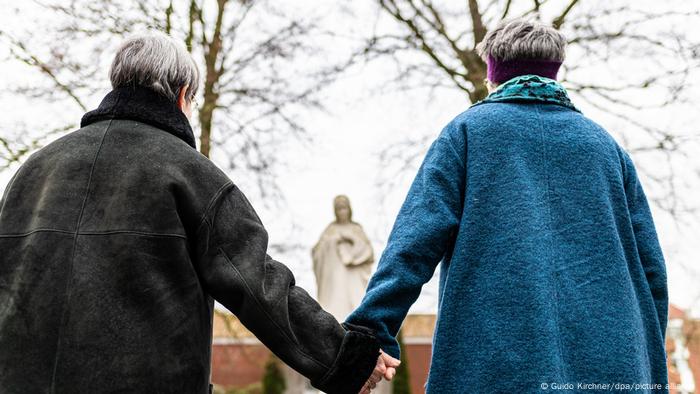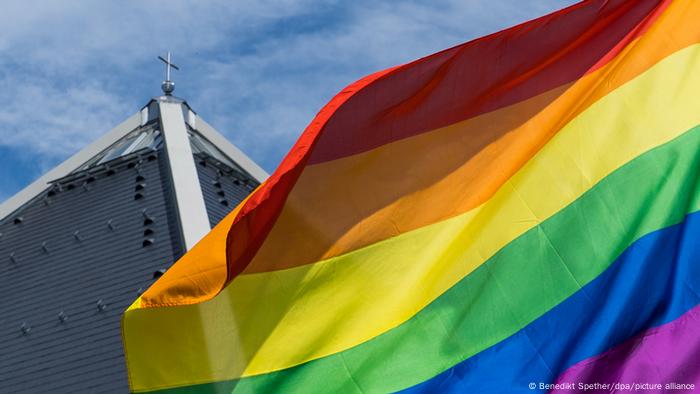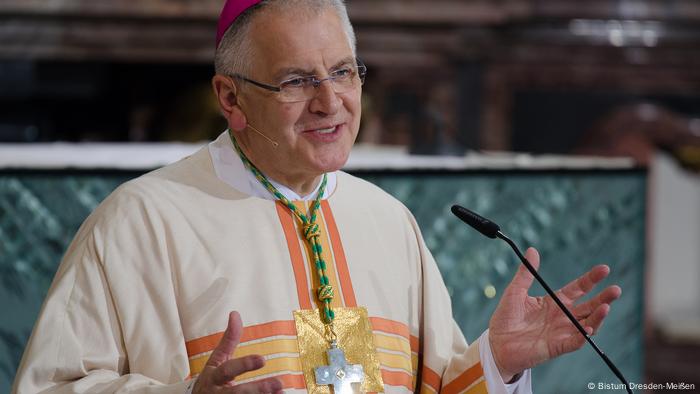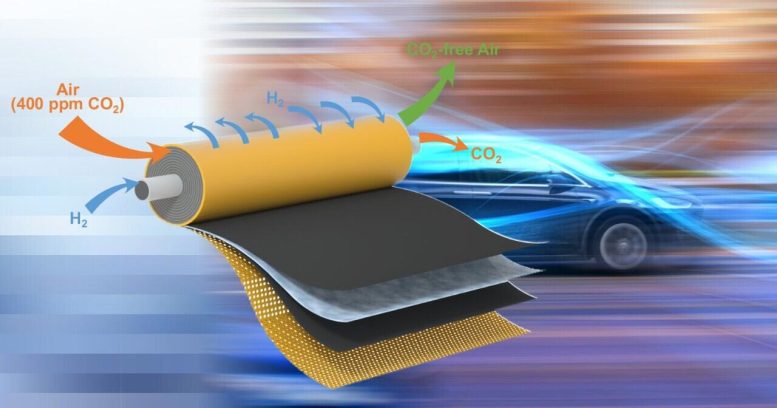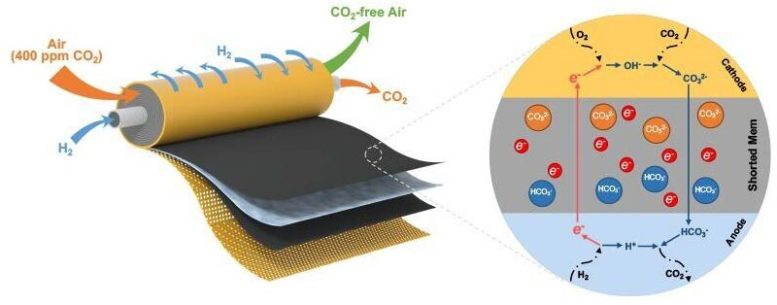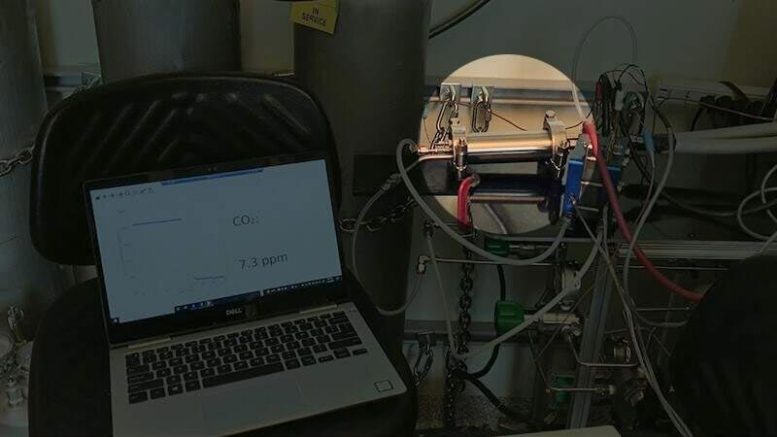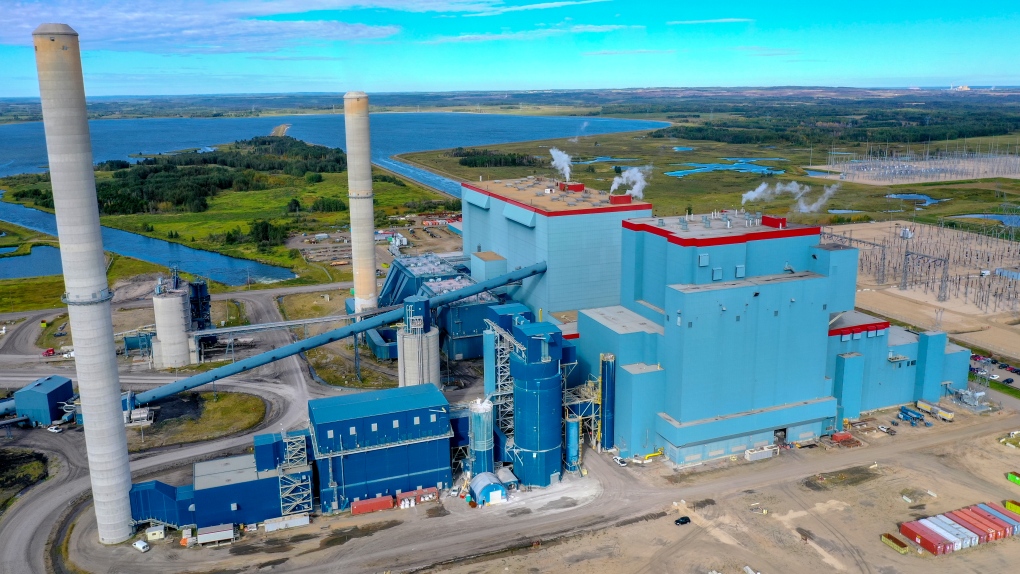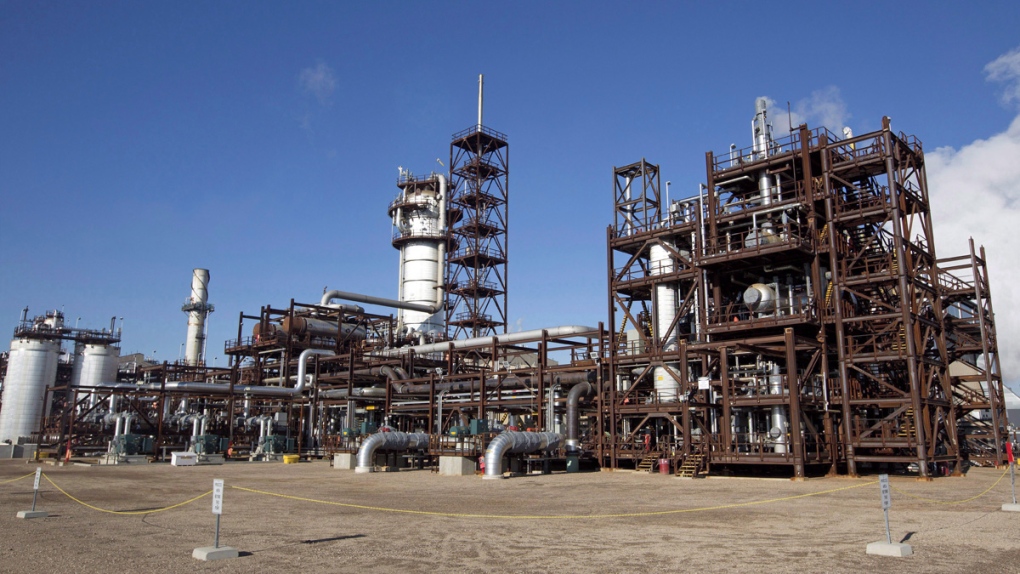Another convoy descends on Edmonton to show local support for protesters in Ottawa
About 1,000 to 2,000 people now in Edmonton for convoy, with several hundred more possibly on way: police
Blaring truck horns echo throughout downtown Edmonton for a second consecutive weekend, as at least 1,000 Albertans converge to support an anti-vaccine-mandate convoy in Ottawa. Hundreds are still in Ottawa as the protest continues.
Several hundred people of all ages gathered on the Alberta Legislature Grounds, next to the Federal Building. A tent there was set up with a sound system that, at one point before speeches began, was playing an anti-COVID song.
But many other demonstrators — some of whom are coming from the blockade in Coutts, Alta. — set up on 109th Street. Traffic was clogged for blocks in both directions, while people cheered from the sidewalks, waving signs and flags.
Many signs call for vaccine mandates to be lifted or suggested the government is taking away freedoms. Some flags read "Trump 2024," and one appeared to be a QAnon flag — a Canada flag with a large 'Q', a nod to the online conspiracy theory group.
The Edmonton Police Service estimated about 1,000 to 2,000 people are in the city participating in the convoy, but "several hundred" more could arrive later Saturday afternoon, a spokesperson said.
Canada Unity, an anti-public-health-mandate group, organized a national convoy late last month to protest the federal vaccine policy that came into effect for truckers crossing the Canada-U.S. border — a group of travellers previously exempt from pandemic entry requirements.
As of Jan. 15, Canadian truck drivers who are not fully vaccinated against COVID-19 must get a PCR test outside Canada within 72 hours of planned entry; get tested when they arrive; and then self-test on Day 8 of a mandatory 14-day quarantine period.
On Jan. 22, a similar policy took effect in the U.S. that stops all unvaccinated and partially vaccinated non-U.S. travellers, including essential workers such as truckers, from coming into the country.
Combined, the policies stop Canadian truckers who are not fully immunized against COVID-19 from leaving the country for work — though they are free to cross Canada's interprovincial borders.
Police said Friday the force was aware of the planned convoy and, with support from "municipal and provincial partners," was allocating "crowd and traffic management resources" to protect public safety, while upholding peoples' right to peaceful demonstration while within city limits.
Mitigation of "disorderly conduct" may include warnings, tickets, arrests and evidence-gathering for ensuing investigations, police said in a statement.
Edmonton police warn the convoy may result in traffic congestion on Anthony Henday Drive, Yellowhead Trail, Stony Plain Road, Whitemud Drive, Gateway Boulevard, Walterdale Hill, Queen Elizabeth Road and parts of downtown Edmonton until 6 p.m. Saturday.
In anticipation of the convoy, the City of Edmonton said Friday that city hall is closed to the public until further notice.
On Saturday, Edmonton Mayor Amarjeet Sohi released a statement upholding people's right to peaceful protest, but denouncing the message of many participating in these convoys.
"One thing is becoming clear. This convoy is not about truckers or about freedom," said Sohi, adding that he has family and friends who work in the trucking industry who are vaccinated.
"This convoy does not reflect their values or the values of the vast majority of Edmontonians."
Some businesses impacted by convoy last weekend
Last weekends convoy brought a lot of noise and traffic to Edmonton — the latter of which hurt local businesses.
Business owners who contacted the Edmonton Downtown Business Association, an advocate for downtown businesses, reported revenue losses of 60 to 90 per cent, with businesses located closer to the Legislature bearing the brunt, said executive director Puneeta McBryan.
"The sheer difficulty of customers and staff getting in and out was just really, really tough. And I don't think most of the protesters had much interest in showing their proof of vaccination and wearing a mask," McBryan said.
"It's almost an impossibility to do business physically anywhere near the Legislature building when they're causing such massive traffic backlogs."
Given that, and how uncomfortable some employees were, many business owners will have to decide whether it's wise to open this weekend at all, she said.
Shaosi Wang, owner of Let's Grill Sushi & Izakaya, told CBC News Friday that he will open his restaurant, but expects revenue losses stemming from the convoy.
Delivery drivers may have a hard time accessing the restaurant, located near Jasper Avenue and 107th Street, but it will be enforcing provincial public health measures, Wang said.
"Once [customers] come into the restaurant, they need to wear masks."
Truck convoy protesting COVID-19
restrictions clogs central Edmonton streets
Author of the article: Dustin Cook
Publishing date: Feb 05, 2022 •
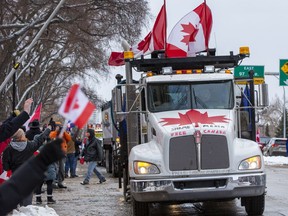
Central Edmonton streets were clogged with vehicles and hundreds of people waving Canadian flags Saturday afternoon as part of a truck convoy calling for an end to COVID-19 measures.
Just after noon, trucks and tractors began to line 109 Street south of Jasper Avenue in both directions with passengers honking horns and waving signs as part of a Freedom Convoy to protest current COVID-19 restrictions and vaccine mandates.
Access to some roads around the Alberta legislature were closed off to vehicles and Edmonton police officers were on scene to assist with traffic and crowd management.
In a statement to Postmedia Saturday afternoon, Edmonton Police Service spokeswoman Lauren Wozny said no arrests or charges have been laid and police are continuing to monitor impacts to traffic and safety. Response times to police calls for service hadn’t been impacted by the convoy, Wozny said.
“As participants arrive throughout the afternoon, our approach is to continue maintaining public safety and mitigate any disorderly conduct that might arise,” she said in a statement.
But Edmonton Mayor Amarjeet Sohi said the convoy was very disruptive to residents in the Downtown core and that behaviour creating fear shouldn’t be tolerated by law enforcement.
“This convoy is not about truckers or about freedom. I have family members and friends who work in the trucking industry. They are all vaccinated. They have done their part to protect themselves, their colleagues, their families and their communities,” Sohi said in a statement.
“I understand and share the worries and frustrations of Edmontonians. These protests are disrupting their daily lives, particularly of those living and doing business in the Downtown core and surrounding communities.”
As a result of the traffic disruptions and loud honking throughout the afternoon, several businesses in the area decided to close their doors Saturday including District Café and Buok Fresh Korean Kitchen.
The Common , a restaurant right on 109 Street, decided to keep its doors open and hope for the best since Saturday is typically the busiest night of the week for businesses that have been struggling during the pandemic. Co-owner Kyla Kazeil said increased protests in the area over the last year have impacted business.
Making matters worse, The Common was hit with vandalism Friday when almost every window was broken, causing a significant amount of damage. Kazeil said this was unrelated to the convoy and the individual involved was arrested by police.
“Everybody Downtown is struggling, it’s tough,” she said. “There’s lots of different things that are impacting hospitality and the convoy and stuff, it’s a very small part of what’s been a very long time. But there’s only so much that you can overcome.”
The protest followed one held last week at the same location as well as a weeklong blockade on the Canadian side of the U.S. border crossing in Coutts. Convoys across the country initially began as a response to a federal vaccine mandate for cross-border truckers travelling to and from the U.S. Protesters are also challenging the current vaccine passport programs in place and other COVID-19 measures such as masks and capacity restrictions.
In Alberta, Premier Jason Kenney said the cabinet’s COVID-19 committee will be meeting next week to determine a plan for lifting measures, including the restrictions exemption program requiring proof of vaccination to enter many facilities including recreation centres and restaurants.
Reacting to the convoy on social media, Kenney called for protesters to be peaceful and not cause significant roadway disruptions. He said police can issue stiff fines if protesters were to block roads under the province’s Infrastructure Defence Act.
“Disrupting the lives of your fellow Albertans and creating illegal, dangerous road hazards is totally unacceptable,” Kenney said in a tweet.
Police said traffic disruptions were expected to last until about 6 p.m.
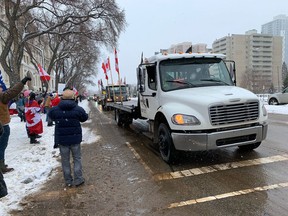

duscook@postmedia.com



